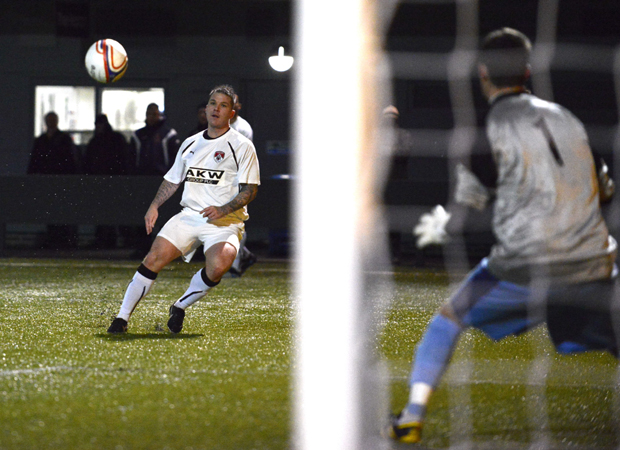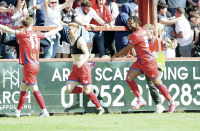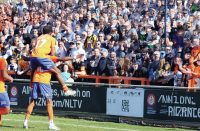SUTTON UNITED Football Club will be 115 years old in March and not many have been run as prudently and proudly as the U’s.
I should know. I played for them for two years and chairman Bruce Elliott has always made sure the books balance as equally as the team does. He is an accountant by trade, after all.
So when one of Non-League‘s great institutions calls for artificial 3G pitches to be given the green light to help Step 2 clubs struggling in the current economic climate, you have to listen.
United lost at least £5,000 by having their two home Blue Square Bet South matches called off over the festive period.
That is in spite of the fact Elliott believes the pitch most famous for its mudbath sinking of Coventry City in the 1988-89 FA Cup third round is in the best condition of his tenure, mainly thanks to the decision to play only first-team games at the U’s home ground.
Investment
Reserve and youth team matches are currently played at Banstead Athletic‘s Merland Rise, at a cost of £200 a time.
It’s a complete reversal from my time there from 2000 to ‘02, when Wimbledon paid to host their second string games at Sutton.
Director Dave Farebrother tells me that all the rain in 2012 has recharged an old underground spring, which is causing an area in front of the main stand to turn into a bog.
With a century-old pitch, any drainage system is likely to have collapsed long before the Berlin Wall and however well the surface is preserved for Paul Doswell’s free-flowing side, rain of the kind we’ve seen recently will always cause a call-off.
Which is where the latest artificial pitches come in – and let’s not call them plastic, because the only plastic in sight will be the cards used by the local community paying to play on them.
The surfaces are flat, without bobbles and will help hone technique. Doswell’s young side train three mornings a week on 3G at the University of Surrey. They would instantly save money by being able to use one at their own HQ.
All the clubs junior sides could do likewise meaning that the club’s bar and catering facilities would, in turn, be used much more often than they currently are with an average of just one game a fortnight played there.
That is why Sutton have spoken to Maidstone United, currently reaping the benefit of the 3G pitch at their new Gallagher Stadium, and written to their fellow Conference clubs to gain support for their introduction at Step 2.
Estimates vary from £300,000 to £500,000 to install, with upwards of £150,000 a year to be made from hiring the pitch alone.
“We are not trying to twist arms that don’t want to be twisted,” says Elliott, “but what we are trying to do is to say ‘Look, football at our level is becoming more and more difficult financially’.
“It’s mighty tough out there to keep balancing the books. We are trying to make sure everyone is aware that if an investment is made in a 3G pitch, you will get your money back.”
As well as being run on old-fashioned principles of only paying what you can afford, Sutton is a club that was, many years ago, at the forefront of innovation in amateur football with as one of the first to install floodlights, become a limited company and employ professional coaches.
Of the 44 clubs in Conference North and South, I’d suggest a majority are happy to be at Step 2 – what they see as the top level of ‘real’ part-time Non-League football – and would pass up the opportunity of promotion as long as their future could be guaranteed.
Sutton are obviously one, and are now leading the way again, asking: “3G or not 3G? That is the question.” I hope their fellow clubs, then the Conference and, ultimately, the Football League, give them the answer many of us football lovers have expressed hope for in 2013.






















